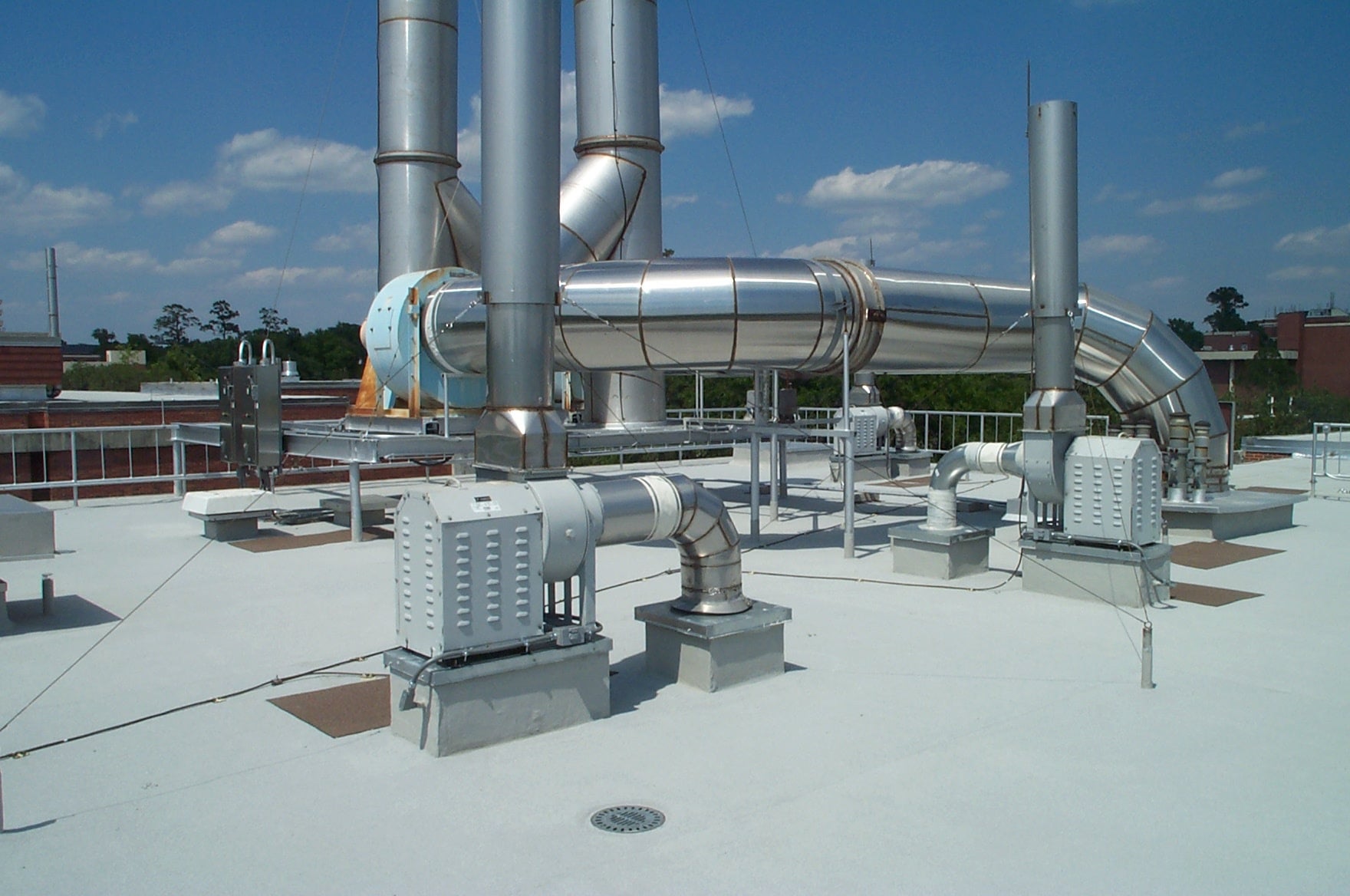Almost 175 years ago, the low-slope roofing industry began with the construction of roof membranes using a field-applied liquid component and a reinforcing fabric. Built-up roofs using coal tar or bitumen were the standard for well over a century; however, in the last 50 years, factory-produced membranes grew in popularity and also secured a place as a dominant method of roofing application. During recent years, fluid-applied materials, albeit without the use of a kettle, have been filling a need for difficult applications where prefabricated membranes are not the easiest solution.
Fluid-applied materials used as flashing solutions have led to the resurgence of the concept. Fluidapplied membranes improved the continuity from the roofing membrane to the vertical termination. The development of high performance materials to be used at these critical junctions is a major advancement for roofing manufacturers and applicators alike. Based on the reliable performance of the flashing materials, professionals are now beginning to use them for complete roof systems.
Modern fluid-applied membranes are one of the fastest growing sectors of the roofing market. Although they maintain the field-constructed concept of the past, that is where the similarities end. The liquid and reinforcement components that are utilized today are highly engineered. Whether it is the base polymers, the types of curing mechanisms, or the versatility in design, this is not your grandfather's roofing.
PMMA, in its liquid state, offers a key advantage: the capacity for chemical bonding between layers. This results in an exceptionally strong, monolithic connection in field applications. PMMA, because it is fluid-applied, provides a high-quality method for successful installations at complex flashing locations. PMMA is also durable, abrasion resistant, and UV-resistant. This characteristic renders them suitable for demanding commercial roofing projects and specialized waterproofing applications on balconies, plaza decks, and parking decks where pedestrian or vehicular traffic is a consideration.
Read the full paper at the link below.
A Fluid Solution: PMMA Roof Membranes
For more information about Siplast products, visit Siplast.com.


